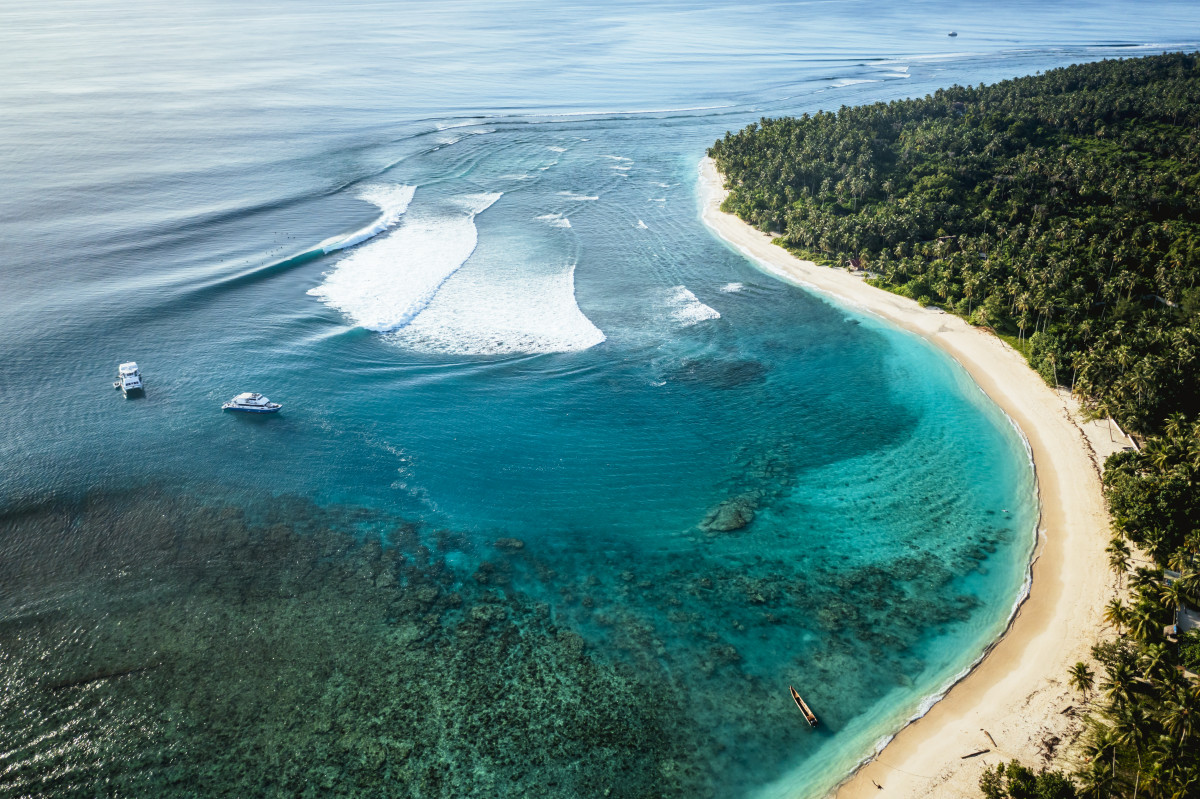
Photo: Marcelo Maragni/Red Bull Content Pool
As surfers, we’re incredibly lucky to do what we love in some of the most beautiful places on Earth. While finding your own isolated peak can certainly be considered a selfish endeavor, a new scientific study suggests that protecting waves, and the ecosystems around them, is actually a net benefit to the planet.
A peer-reviewed paper published on Tuesday in Conservation Science and Practice found that environments near surf spots store a measurable amount of the planet’s carbon dioxide, a key indicator of how our planet is warming thanks to the greenhouse effect. The paper’s title is “Co-occurrence of surf breaks and carbon-dense ecosystems suggests opportunities for coastal conservation.”
In what is being called a first-of-its-kind study, researchers estimated around 88.3 million metric tons of CO2 are stored in forests, marshes or mangroves within 1 kilometer inland of 3,602 surf spots around the world. That’s roughly 1% of the world’s annual energy emissions, about the same amount of carbon coming from 77 million cars. Furthermore, habitats within 1.8 miles of surf spots have an estimated 191.7 metric tons of carbon. “
What does it all mean? The paper’s authors said the CO2 stored near the ocean is “irrecoverable carbon,” meaning that if a tropical habitat near a reef break was bulldozed, it would be impossible to re-sequester the carbon before 2050, a year many experts say the planet should reach net-zero emissions by to avoid the consequences of climate change.
“If you destroy these ecosystems, there’s no way that you could ever regrow the forest or restore the mangroves by 2050,” Jacob Bukoski, the paper’s lead author and an assistant professor at Oregon State University, told Bloomberg. “So you can essentially consider that carbon as irrecoverable for climate mitigation purposes.”
Having data like this helps legitimize conservation efforts, as it shows the value of protecting coastal ecosystems. You might recall that the Mexican government is trying to build a canal from the Pacific Ocean into the Gulf of Mexico, but it would cut into the heart of several world-class waves and hurt the local biodiversity in Oaxaca. For organizations like Save the Waves Coalition data like this is another cool in the conservation belt.
The paper goes on to say, “These results highlight surf conservation as a potential avenue to simultaneously mitigate climate change, protect biodiversity, and promote sustainable development in coastal communities.” However, further research is needed to quantify the carbon sequestration around a specific surf-protected area and potential threats to those ecosystems.
Related: The Mission To Protect Mexico’s Pointbreaks Is On, And You Can Help

